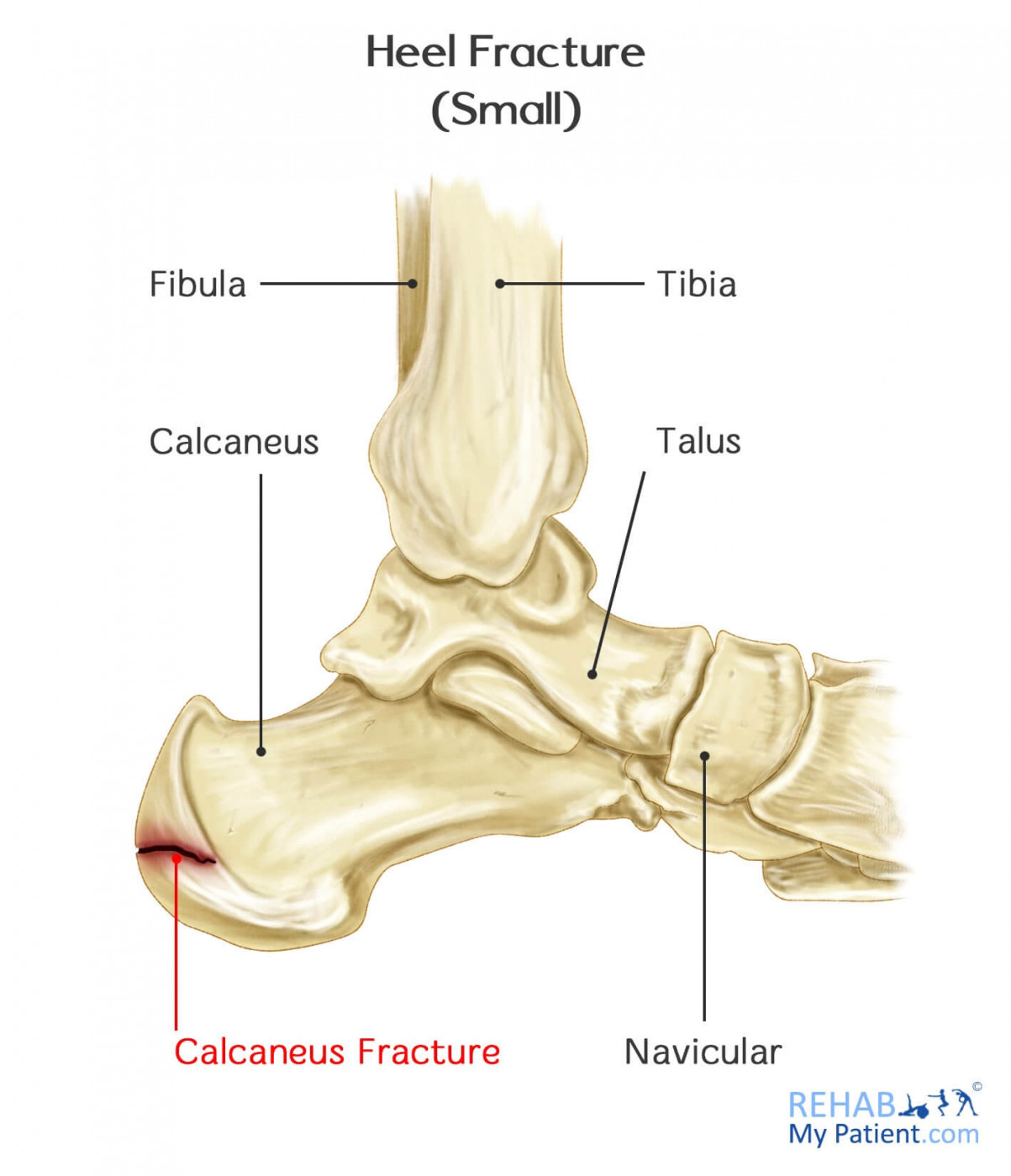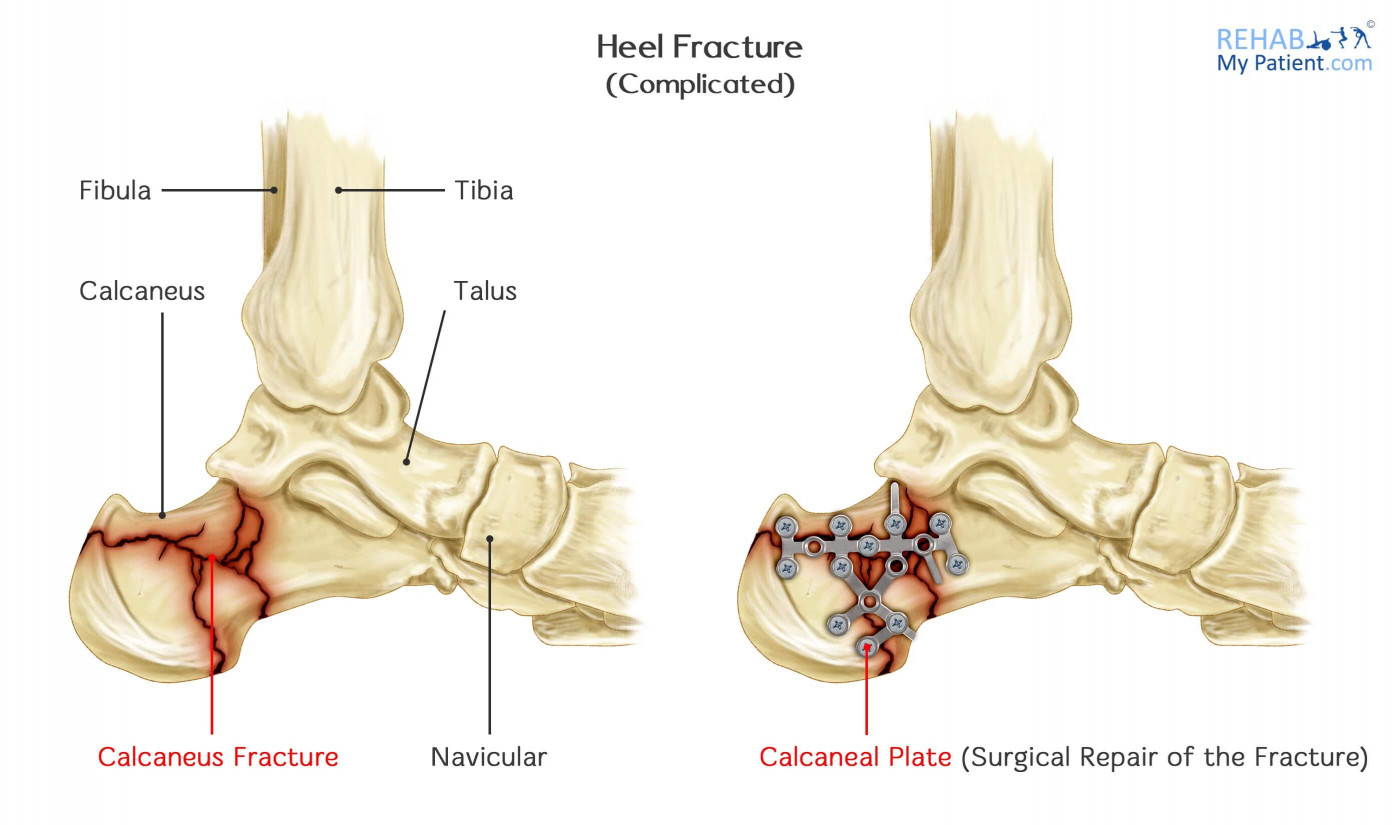
Fractures of the heel bone are usually the result of jumping and landing on the heel. They can also be caused by road traffic accidents. The heel fracture tends to be an uncomplicated fracture.
The heel is the most frequently fractured tarsal bones. These fractures tend to account for roughly 2 percent of all fractures in adults. Out of all these fractures, 60 percent of them are heel fractures. In a high-energy collision, other parts of the body tend to be injured as well. In up to 10 percent of cases, patients can also sustain fractures of the hip, spine and other heel.
It can be difficult to diagnose a heel fracture if the pain came on without any trauma. So if there was no fall or blunt trauma, the heel pain could be caused by plantar fasciitis, or bone bruising. But fracture would be unlikely unless the patient was osteoporotic.
Heel Fracture Anatomy
The feet are full of flexible structures consisting of bones, muscles, joints and soft tissues that allow you to stand upright and perform activities such as running, walking and jumping.
Three sections make up the feet:
- The forefoot contains five longer bones and five toes.
- The midfoot is a collection of bones forming arches in the feet. These include three cuneiform bones, the navicular bone and the cuboid bone.
- The hind foot is composed of the ankle and the heel. The talus bone supporting the leg bones form the ankle. The heel bone is the largest out of all the bones in the foot.
Tendons, muscles and ligaments run along the surface of the feet, which allows all of the complex movements that are needed to maintain balance and motion. The Achilles tendon connect the calf muscle to the heel, which is essential for jumping, running and being able to stand on your toes.


The medical/anatomical name for the heel is called the calcaneus, pronounced cal-cane-ee-us. The word calcaneus derives from the Latin “os calcaneum” meaning bone of the heel, with calx in Latin meaning heel or chalk.
How to Treat Heel Fractures:
- Nonsurgical Treatment
If the pieces of the broken heel aren’t displaced from the injury, you might not have to undergo surgery. Casting will help to keep the broken ends properly positioned to allow them time to heal. You might not be able to place weight on the foot until after the bone has healed properly. This can take anywhere from six to eight weeks, if not more.
- Surgical Treatment
Early surgery is often recommended for treating an avulsion fracture. Even though it is quite uncommon, a piece of the bone can be pulled away as the Achilles tendon is torn away from the bone. In this type of fracture, early surgery will often decrease the risk of injury to the skin surrounding the Achilles tendon.
Tips:
- Smoking tends to affect both the skin and bone healing process, so make sure the doctor is aware of any smoking habits that you have.
- Even if you don’t have surgery, it will often take the bone longer to heal if you are a smoker.
- If the injury is minor, you might be able to resume normal activities within three to four months following surgery.
- In severe fractures, it can take anywhere from one to two years for the heel to properly heal.
- Patients who have jobs that require extensive walking or climbing will often notice they have a number of limitations.
Sign Up
Sign up for your free trial now!
Get started with Rehab My Patient today and revolutionize your exercise prescription process for effective rehabilitation.
Start Your 14-Day Free Trial